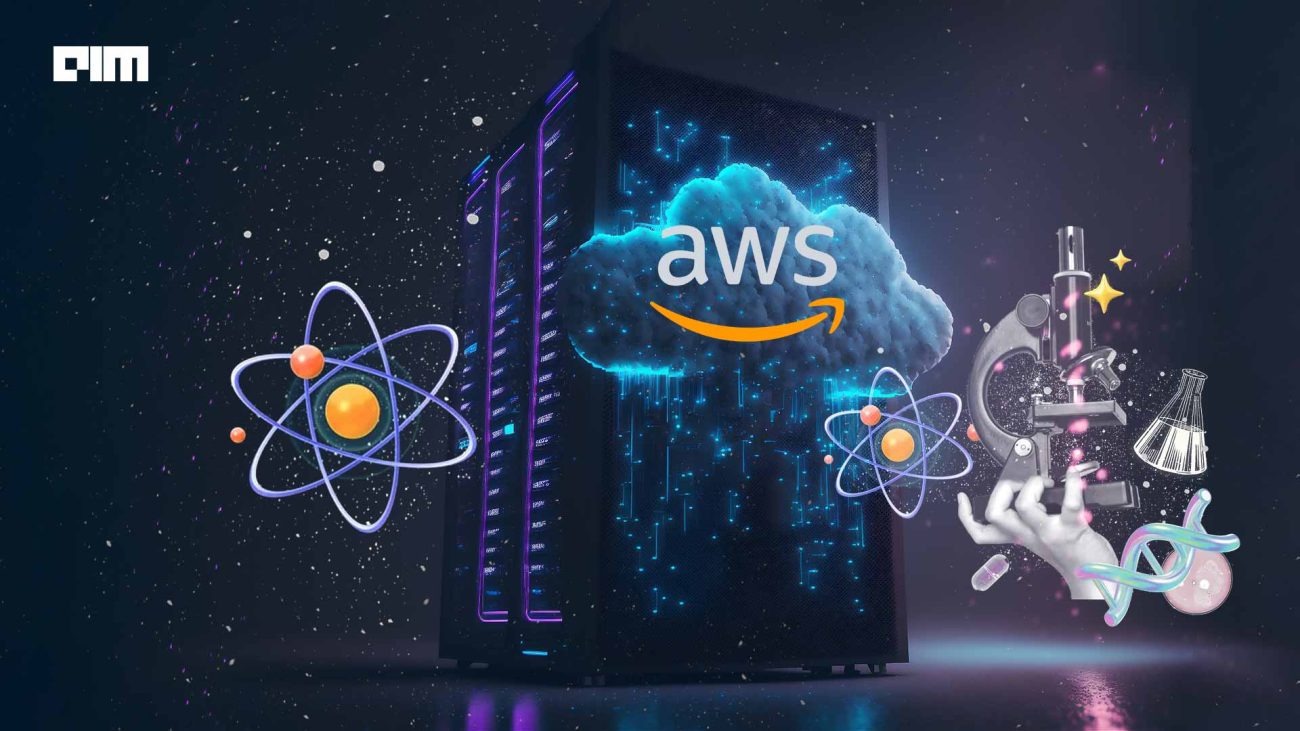|
Listen to this story
|
The potential in the quantum computing market is immense, particularly for tech giants vying to establish a foothold in the space. In February this year, Google made headlines for its development of a new quantum error correction scheme that promises to reduce error rates by 0.1% – a significant margin in this context.
The same month saw AWS’ quantum division release a new software framework, PArallel, LArge-scale Computational Electromagnetics (Palace), which can be used to perform large-scale 3D simulations of complex electromagnetic models and enable the design of quantum computing hardware.
AWS’s essential offering, Amazon Braket, enables developers and researchers to test their quantum computing algorithms on quantum simulators and quantum hardware. By doing this, they can get a reasonable degree of confidence in the algorithm’s performance before running it on an actual quantum computer, which is expensive and generally takes time to get access to.
Kanishka Agiwal, head of service lines, India & South Asia at AWS, mentions that the company has partnered with five companies – IonQ, Rigetti, OQC, Xanadu, and QuEra – to provide like a single pane of glass through which developers can port algorithms in a quantum computer and run them. Each of these partners offers a different type of quantum computer on Amazon Braket. One specialises in superconducting quantum computing, another in trapped-ion computing, and a third in neutral atom, and finally in photonic quantum computing. All of them cater to different problem statements.
Some of the problem statements include finding efficient routing algorithms for logistics, simulating ammonia molecules (used in fertilisers) to predict how they disintegrate or evolve, and modelling the behaviour of photovoltaic receptors on solar panels to capture light effectively. “Machine learning on classical computer has attempted to solve these problems, but it doesn’t achieve a fully optimal solution,” said Agiwal.
Production use cases
There are a lot of applications now of quantum computing that are either in test, trial or actually in the production phase. For example, AWS itself put out a practical production use case of Quantum Key Distribution (QKD), an encryption-decryption system that immediately alerts the sender and receiver if someone intercepts the communication channel.
With De Beers, a diamond mining company, AWS is producing artificial diamonds to help quantum networks. In the case of a classical network like optical fibre, light typically passes through the cable from point A to point B. But, after that, a repeater is needed to amplify the signal – otherwise noise comes in and the signal slowly dies out.
However, in a quantum network, traditional repeaters don’t work because photons change their state, making it difficult for regular repeaters to identify and repeat incoming signals. In this case, diamonds, or repeaters made of diamonds, can essentially repeat the signal further.
As more such experimentation takes place on different quantum computers, companies working on quantum today will see a significant uptick in usage and automatically in revenue as well.
Quantum on cloud
Quantum computers are typically either shared on a time-sharing basis or simulated using high-performance computing with pseudo-quantum circuits, as not everyone can afford to have a quantum computer on-premises. However, what happens with the cloud is that access to quantum computers is democratised. On the cloud, individuals will be able to access various types of computers for different experiments. In addition, utilising quantum simulators and quantum hardware on Amazon Braket enables developers to test algorithms at a low cost before deploying them on quantum computers, thereby increasing the likelihood of success.
Agiwal notes that in many cases, it may be necessary to switch back and forth between classical and quantum computing when testing. For instance, if there is noise in the output from a quantum computer, one might want to compare its variance with that of a classical computer. A system that can simulate both types of computing and provide results for both would be a huge game changer.
“Therefore, I think, the cloud is the way to go for quantum computing, and that’s the future, which is why we see a large number of players providing quantum computers on the cloud,” said Agiwal.
Measuring progress
But, with a lot of conversation around quantum still in the air, how do companies measure real progress? According to Agiwal, the proof is really around how we reduce noise in the system, and how we bring in additional proof of concepts or commercial deployments like QKDs, quantum repeaters, and other NP hard problems.
“Some of these will still be community developer-led, and a few will be more hardware-related, which we will work with our partners to advance further,” he said.
Community-led advancements in quantum computing include initiatives such as AWS releasing a problem on GitHub for the community to solve. One such problem involves how can a salesman who is trying to visit 4 to 40 places in a day achieve the task without repeating the same places. The problem becomes increasingly complex as the number of locations increases from 40 to 400, requiring more efficient solutions.
AWS Quantum in India
Quantum Computing Applications Lab (QCAL), a collaboration between the Ministry of Electronics and Information Technology (MeitY) and Amazon Web Services (AWS) is an attempt to drive better quantum computing enablement in the Indian ecosystem. A first-of-its-kind initiative in the country, it provides the scientific, academic, or even developer community with access to a quantum computing developing environment. It is now running its second cohort.
AWS is also working with industry partners like TCS, Mphasis, and Fractal to build their own centre of excellence and leverage Amazon Braket to solve some real-world problem statements.
Meanwhile, as part of the skilling initiatives, AWS is working with two key partners – QpiAI and Mahindra University to develop the talent pool in quantum technologies. The target audience for these courses are essentially undergraduate and postgraduate students, as well as working professionals looking to upskill themselves.





















